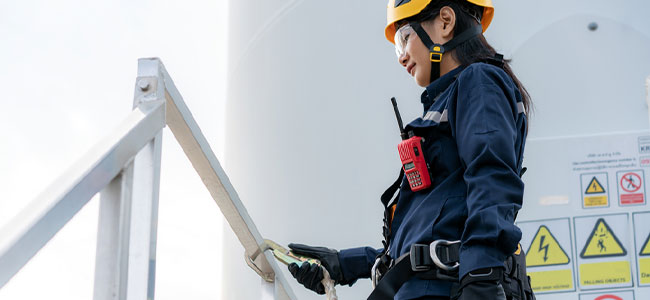
Why Fall Protection PPE Fit Matters: OSHA’s Rule Proposal for Construction
From previous attempts at fall protection to OSHA’s recent proposals, the journey of fall harnesses emphasizes the critical need for PPE that suits every worker, ensuring both safety and compliance.
- By Dennis Capizzi
- Oct 11, 2023
Historically, fall harnesses were not known for their comfort or fit. For example, the best-in-class gear until the mid-20th century was a simple body belt. The problem, however, was that the body belt could slip off, the worker could easily slide out or a fall could cause severe force trauma to the most vulnerable part of the body, the spine.
Fast-forward a few years to when military-style harnesses became the trend. They offered quite literal full-body coverage. Yet, these hot and hefty harnesses could not only exhaust the wearer, they could restrict movement and limit mobility in ways that could make wearing them almost as unsafe as not wearing them.
Despite the vast advancements that have been made over the years to improve the comfort and wearability of fall harnesses, the “one-size-fits-all” approach still does not necessarily apply. Workers may be reluctant to don gear that does not fit properly for workers of various shapes and sizes.
If workers are hesitant to wear poor-fitting PPE, not only does it risk their safety and the safety of their team, but it also impacts an employer’s compliance with OSHA regulations. What’s more, even if a worker does don a fall harness but it is either too large or too small, that worker’s safety can still be compromised. According to OSHA, “ill-fitting PPE may not protect an employee at all, and in other cases it may present additional hazards to that employee, and to employees who work around them.”
This issue can be particularly important for smaller construction workers, including some women, who may require a smaller fitting harness. This is especially notable, as according to recent statistics, one in ten construction workers is a woman.
And the same applies for men who might not fall under standard height and weight ranges.
Current OSHA Regulations for PPE Fit
OSHA has existing standards around PPE for general industry, shipyard employment, maritime terminals, longshoring, and construction. These standards “require employers to provide PPE when it is necessary to protect employees from job-related injuries, illnesses, and fatalities.” In most cases, employers are required to pay for PPE when it is used to comply with an OSHA standard.
The general industry (29 CFR 1910.132(d)(1)(iii)) and maritime (29 CFR 1915.152(b)(3)) PPE standards already include a specific requirement that employers select PPE that “properly fits” each affected employee.
This article originally appeared in the October 2023 issue of Occupational Health & Safety.